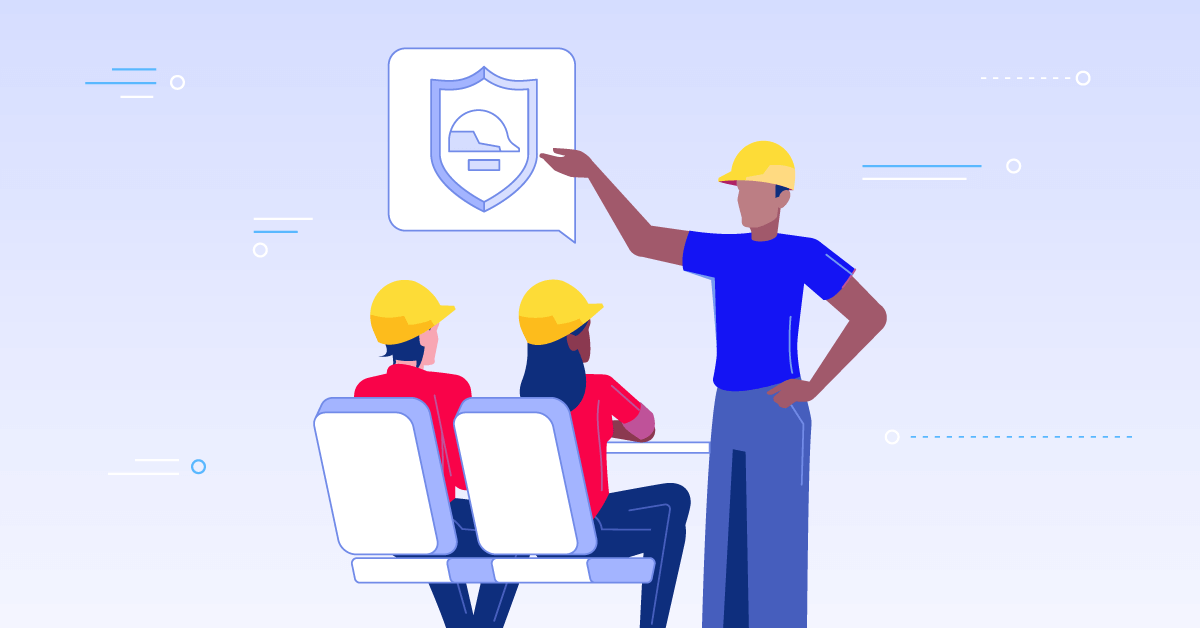So, what can you do to bring employees, burned out by poor online training experiences, back? And what features can you add to your courses to rev them up and make them enticing to your employees?
In this post we’ll have a look at what employees want in an online training program.
The Anywhere, Anytime Flexibility
Flexibility to follow the course on the learner’s own schedule is of utmost priority — and this includes being able to access their training content offline.
Paradoxical as it may sound, access to offline content can be a very important enabler of online training. This is especially beneficial for globally dispersed employees who may not have the appropriate bandwidth or a generous enough data plan for mobile access to training material.
Thus, to make the learning task connectivity-independent, reading materials and other documents should be available for offline use.
With eFront, employees can learn on the go, with or without a connection, thanks to its built in support for offline courses. Instructors just need to enable the “offline” mode for a course in its settings page, and learners get the option to download all the lesson’s contents and resources for offline viewing from within their familiar eFront web interface.
In fact, eFront is smart enough to automatically switch to offline access anytime there’s not an active internet connection present (and, of course, get back online again). The feature works in all modern browsers and operating systems — including iOS and Android devices.
Another perk in terms of flexibility is being able to catch up on your training from home or, generally, places other than work. Being able to have just-in-time (JIT) access to training material is important too — employees frequently need to access learning materials while working on a specific task or procedure.
For both of these reasons, making the content accessible from mobile devices is important. And with eFront, that’s the default anyway, as the platform comes with a fully responsive user interface that adapts and looks equally good on your desktop, laptop, tablet or smartphone.
Last but not least, another way to make employee training more flexible is to offer support for microlearning — making knowledge accessible in chunks that are easier to remember and recall.
Again, eFront comes with built-in support for microlearning, but we also have a dedicated platform called Snapicco that makes corporate microlearning a breeze.
Social Learning Features
Let’s be honest here, there are more competent and less competent trainees, and having employees that fall in either extreme of the performance spectrum can be less than pleasant to deal with.
Training should move at a pace desired by the trainer, not at the pace of the quickest learner or at that of the slowest one.
The social learning model helps the trainee to learn at their own pace and acquire a unique and individualized learning experience.
Employees enjoy learning from experts and helping each other in the discussion forums or in group chat sessions. Challenging content can be discussed with over-achievers before moving on to the next lesson. Document-sharing, peer feedback and comments on assignments are also well-appreciated.
Online training, when done socially, increases employee engagement and satisfaction.
Online training, when done socially, increases employee engagement and satisfaction.Share on
From built-in forums, groups, and personal messages, to document sharing and more, eFront comes with most of the tools you need to add the crucial social element to your learning.
And if you want to take this social thing up a notch, there’s our tried and true “eFront for IBM Connections” platform, that connects with the Big Blue’s industry-leading IBM Connections Social Workplace software.
Interactivity
Employees love interactivity and total involvement with their training content.
So, how can you establish that?
Immersive and interactive are the two main keywords here. Start with a bewitching storyline, believable yet dramatic. Something that feels like a “good read”. Use that, and involve a few characters who need the help of the learner.
Also, take note of how individuals are hooked to game environments — and create your own learning-oriented game environment. Remember the last simulation game you played? Strive to bring a similar emotional feeling in your eLearning courses. There could be a main character that the learners identify with, and get anxious to help by applying their knowledge.
Be consistent in your design and characters — your storyline should end with a satisfying ending, and the main character should be happier towards the end of the course, which will translate to your learner feeling more excited and satisfied. They should be talking to their peers on how well they did in the course and what could have been done better.
With eFront’s support for full multimedia course creation, including rich H5P content, you can build all kinds of complex interactive learning experiences. Sprinkle a little gamification dust on top, and you’ll soon have employees hooked on their eLearning portals and trying to outdo each other and score better.
Speaking of scores, another feature employees get addicted to are frequent and short quizzes.
Avoid waiting till the very end of a large chapter to assess employees — this will only have them unlearn facts and build up anxiety for the upcoming “big” test.
Instead, assess them intermittently throughout the course, as a safety net that they can use to master skills and acquire knowledge in a secure environment.
eFront gives you all the tools you need to create fun mini-quizzes to test your learners at the end of each lesson, including the ability to auto-generate tests for you from a question pool.
Course Evaluation
Here’s a fun idea: instead of having a bunch of senior managers evaluate any given course and offer comments for improvement, how about asking your learners?
Trainees really appreciate it, and perform better, when they are shown that their opinions, with regards to their training program, are valued.
Problem is, if you go and ask them “how do your think this course could be improved” directly, you’ll most likely only get “no comment” as their post-course evaluation. They all have their opinions and ideas on improvement, but none wants to appear too critical.
So how can you get those out of them successfully?
Ask them indirectly. Depending on the length of your course, divide the course into three to four sections. After each section, give them an “emotion rater” survey — something fun and easy to fill out.
Feel free to use emoticons and other graphics, and ask the trainees how they are feeling at that point of the course. Ask about their high and low points with regards to that section. Add a quiz-type question asking them the meaning of a couple of the main keywords from that section. Make this survey short and simple.
With the aid of eFront’s survey tools and built-in survey analyzer, breakdown their responses and use this feedback as your course evaluation.
While the drive to learn and grow professionally exists in most employees, it can be ignited to its full potential only by integrating their suggestions and fine-tuning your training program to their needs.
To keep in touch with those needs, always ask your employees what they want to see in their training program.


